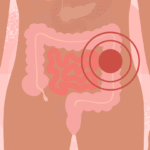MSPI symptoms include:
- Vomiting
- Diarrhea
- Weight loss or trouble gaining weight
- Nasal congestion
- Gas and bloating
- Abdominal pain
- Acid reflux
- Rashes or eczema
- Blood or mucus in stool
It’s also common for babies with MSPI to show signs of colic, or inconsolable crying. Infants with MSPI may:
- Cry for up to 18 hours per day
- Refuse to breastfeed or take a bottle
- Overeat or seem more hungry than usual
- Seem irritable or fussy
Delayed reactions to milk or soy protein can also occur, making it harder to figure out what’s causing your baby’s symptoms.
Food Intolerance vs. Food Allergy
Food intolerances and food allergies are different things, with two distinct meanings. While allergies involve the immune system, an intolerance means the body can’t digest a food for reasons other than an immune response, such as lacking necessary digestive enzymes.
Allergies also fall into two categories:
- IgE-mediated: This type involves allergic reactions that show up quickly and involve the antibody IgE.
- Non-IgE-mediated: These types of inflammatory reactions still involve the immune system, but not the IgE antibody. Non-IgE-mediated reactions take longer to show up and tend to be related to digestion. Most milk protein allergies and cases of MSPI fall into this category.
MSPI is not a cow’s milk allergy or a soy allergy, and its symptoms may take longer to appear.
Allergic Colitis
Allergic colitis occurs when a certain protein allergy causes inflammation in the colon. Symptoms may include:
- Blood or mucus in stool
- Gas
- Abdominal pain
- Diarrhea
- Vomiting
MSPI in Adults
“While MSPI is primarily diagnosed in infants, adults can experience non-IgE-mediated sensitivities to milk or soy proteins,” says David Kahana, MD, a gastroenterologist and 1MD Nutrition Advisory Board member.
Dr. Kahana says that people often mistake these sensitivities for irritable bowel syndrome, as symptoms typically include bloating, abdominal pain, diarrhea, and fatigue.
Adult-onset cow’s milk protein allergies — although rare — are also more likely to be IgE-mediated, or similar to a classic allergic reaction.
Read the full article here




